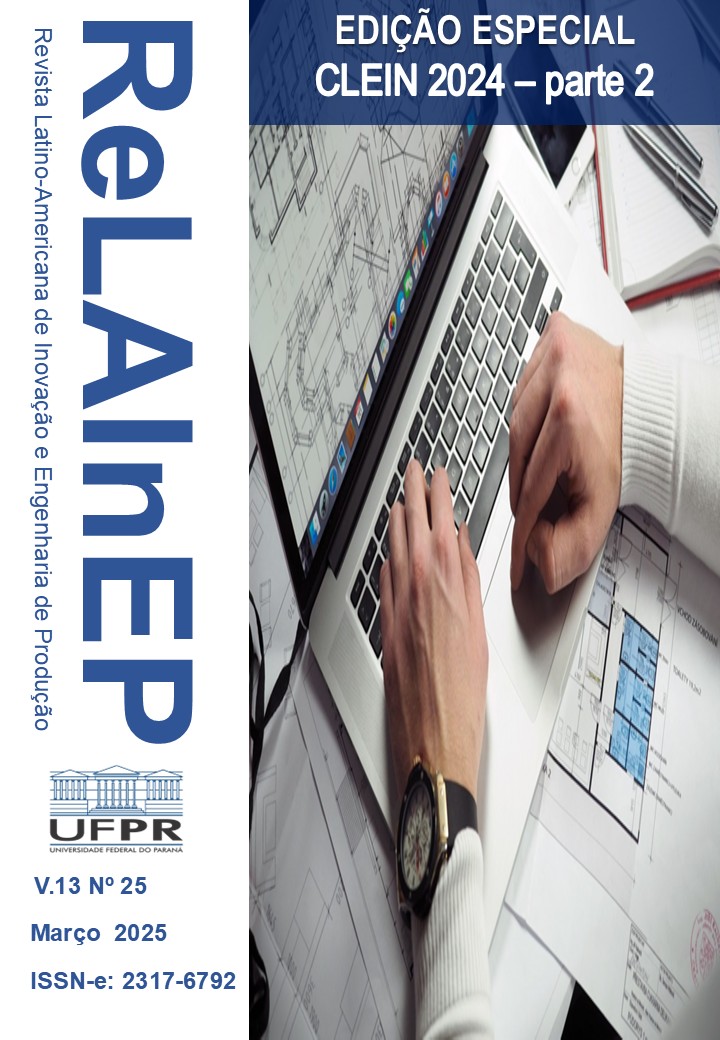POTENCIALIDADES DE LA INTELIGENCIA ARTIFICIAL EN LA APLICACIÓN DE ESTRATEGIAS CIRCULARES EN EL MARCO DE LA LOGÍSTICA INVERSA
DOI:
https://doi.org/10.5380/relainep.v13i24.98489Resumo
The circular economy maximizes resource efficiency in a continuous cycle of use and reuse, while reverse logistics manages the collection and recycling of used products by returning them to the value chain instead of throwing them away. Both complement each other by minimizing environmental impact, conserving resources and promoting a more sustainable economy. This work aims to analyze the potential offered by Artificial Intelligence as an innovative approach to Circular Economy strategies within the framework of Reverse Logistics. The method used was the Systematic Review of the Literature. The results obtained were based on the evaluation of key indicators such as the source of supply of materials, gas emissions, consumption and reuse of products, among others, demonstrating that the integration of smart technologies increases the use of recycled materials, reduces CO2 emissions, improves inventory management, maximizes efficiency in the supply chain, minimizes product waste. The application of the work allows companies to identify business opportunities, reduce costs, develop more sustainable products and services and innovate in reverse logistics, allowing them to increase competitiveness, improve environmental impact and encourage environmental conservation.
Downloads
Publicado
Como Citar
Edição
Seção
Licença
Autores que publicam nesta revista concordam com os seguintes termos:
- Autores a partir da submissão cedem integralmente os direitos patrimoniais da obra à publicação, entretanto permanecendo detentores de seus direitos morais (autoria e identificação da obra) e conforme a Licença Creative Commons, CC BY-NC – atribuição não comercial conforme a Política de Acesso Aberto adotada pelo Portal de Periódicos da UFPR. É permitido acessar, baixar, copiar, imprimir e compartilhar desde que não seja para fins comerciais e citando a referida fonte, conferindo os devidos créditos de autoria e menção a Relainep.
- Autores têm autorização para assumir contratos adicionais separadamente, para distribuição não-exclusiva da versão do trabalho publicada nesta revista (ex.: publicar em repositório institucional ou como capítulo de livro), com reconhecimento de autoria e publicação inicial nesta revista.
- Autores têm permissão e são estimulados a publicar e distribuir seu trabalho online (ex.: em repositórios institucionais ou na sua página pessoal), já que isso pode gerar alterações produtivas, bem como aumentar o impacto e a citação do trabalho publicado (Veja O Efeito do Acesso Livre).
Para isso, deve-se fazer o DOWNLOAD DO FORMULÁRIO, assinar e fazer o upload como Documentos Suplementares com o título "Declaração do autor", junto da submissão do artigo.




